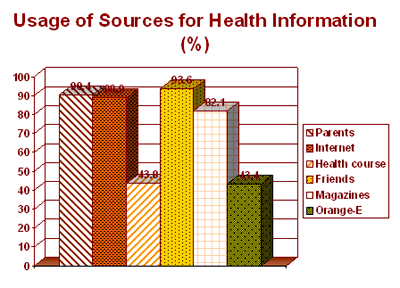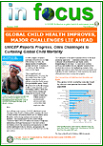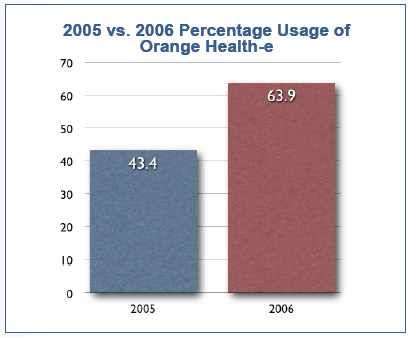|
Healthy Campus Initiative: Assessment of Syracuse University’s Electronic Health Newsletter
An electronic survey was conducted among students at Syracuse University to assess the usage and helpfulness of a new health promotion electronic newsletter, “Orange Health-e.” The newsletter was intended to provide healthy tips to students about nutrition, exercise, risky behavior avoidance and other preventive health advice.  A second electronic student survey was conducted 12 months later to re-evaluate these findings. This study was fielded from April 4 through April 25, 2006 among 4000 randomly selected students. A total of 323 responses was obtained yielding a response rate of 8.1 percent. Demographics showed that the sample skewed female (71.5%) and included more graduate students (28.1%).
Highlights of this survey showed parents to be the most helpful as well as the most widely used source of health information, with nine out of 10 students rating their parents 7.0 on a 1-10 helpfulness scale. The family doctor tied with parents on the helpfulness rating and was used by 87.8 percent of the student respondents. The third most helpful source of health information according to this survey was the Internet (6.7 helpfulness mean). This was followed by health-focused coursework (6.2 helpfulness mean), which involved only 50.2 percent of the students. Meanwhile, the newsletter’s helpfulness rating increased 1.1 points to 5.9, and its usage among the students rose more than 20 percentage points to 63.9 percent. These results indicated that the electronic health newsletter broadened in its reach and helpfulness, and was therefore effective in serving the student population. Updates analyses of the impact of the Orange E Letter will continue to be reported.
|
|
|||||||||||
Questions? Comments? Concerns? E-mail CECHE at CECHE@comcast.net Go back to the CECHE home page Go back to the CECHE home page
|


